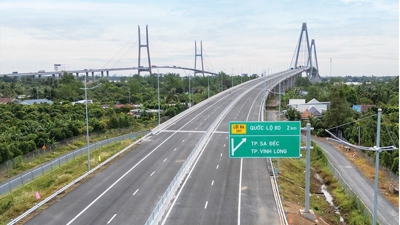41 cities and provinces to implement smart city projects
Vietnam has identified the trend towards urbanization and smart city development as the right direction for the future, a workshop has heard.

Forty-one of Vietnam’s 63 cities and provinces have finished or are developing plans for smart city projects, the “Developing a smart city with urbanization associated with industrialization and modernization towards 2030, with a vision to 2045” workshop on November 10 heard, which was held within the framework of the Industry 4.0 Summit 2021, to be organized in early December.
Smart city development is receiving attention from the government, with Decision No. 950/QD-TTg approving the Scheme of Sustainable Smart City Development in Vietnam for the 2018-2025 Period and Orientation to 2030, issued in 2018 by the Prime Minister.
Vietnam now has 870 urban areas, which are home to just 40 per cent of its population and account for 7.4 per cent of its land area but contribute over 70 per cent of GDP and post economic growth that is 1.2 to 1.5 times higher than the country’s average. The country has witnessed rapid urban development in the past 20-30 years, but infrastructure has not kept pace.
In smart city development, Vietnam holds advantages in fast-growing digital infrastructure, thorough policies, and a specific roadmap. There are certain shortcomings, however, regarding awareness about and concepts of smart cities. And there are no uniform standards or criteria for urban areas.
Criteria and standards must therefore be quantified, Deputy Minister of Construction Le Quang Hung told the workshop.
Regarding the implementation roadmap, he went on, it is expected that, by 2025, Vietnam will have completed the legal basis and have standards and regulations to deploy smart city development and pilot the construction of smart urban areas. By 2030, about 30 per cent of urban areas will apply the basic criteria on smart cities, and the vision by 2045 is that the majority of Type II urban areas and above will reach the basic criteria of smart cities.




![[Interactive]: Economic overview - July 2025](https://media.vneconomy.vn/400x225/images/upload/2025/08/06d54ac72a-8805-4fcc-b167-1219b8e73c8d.png)


